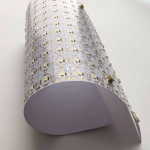Available Light Sources
Available light sources include fluorescent, halogen, HID, incandescent, and LED.
In most fluorescent lamps, an electric current stimulates a mixture of argon and mercury gas contained in a glass bulb, producing ultraviolet rays. These rays strike a fluorescent phosphor coating on the interior surface of the bulb, causing it to emit visible light. Fluorescent lamps are more efficient than incandescent lamps because very little energy is lost as heat.
A type of incandescent lamp that uses a halogen gas to increase both light output and rated life. Halogen lamps are known for moderately high efficiency, quality of light, and high-rated life compared to regular incandescent lamps.
High-Intensity Discharge (HID)
A family of gas-discharge arc lamps that create light by sending an electrical discharge between two electrodes and through a plasma or ionized gas. An additional gas is generally used, which serves as an easy way to classify the significant high-intensity lamps: Mercury, sodium, and metal halide.
An electric lamp consisting of a transparent or translucent glass housing containing a wire filament (usually tungsten) emits light when electricity is heated.
An electrical current passes through a microchip, which illuminates the tiny light sources, LEDs, and the result is visible light. The heat LEDs produce is absorbed into a heat sink. Because of their efficiency, LEDs make a good alternative to most conventional light sources.

